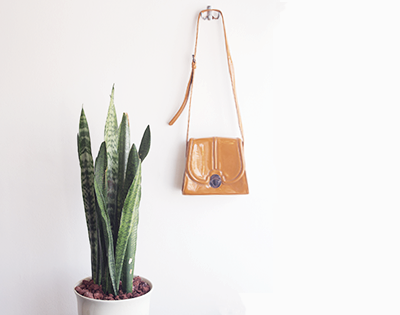In recent years we've seen a big drive for a more sustaianble fashion industry which is amazing! Considering nearly 75% of textiles are made from crude oil and textiles account for 15% of global plastic use, switching to a more environmentally friendly wardrobe is a great step to living more sustainably.
Supporting sustainable fashion is so important with the fashion industry fastly becoming one of the most polluting industries, already having overtaken aviation and shipping.
However, there are some issues with the sustainable fashion movement. Read on for three sustainable fashion myths...
Myth One - Vegan Leather Is More Sustainable
Sustainability and veganism is interconnected. We all understand that the agriculture industry is massively polluting to the planet and reducing our reliance on, and consumption of, animal products is important to reducing the effects of climate change. But that doesn't mean that vegan alternatives are always better for the planet. This is especially apparent in fashion where vegan leathers are usually positioned as being more eco-friendly as animals aren't harmed in the process.

However, many vegan leathers are made from synthetic materials like petroleum-based PVC, contributing to the demand of oil. These 'leathers' then release toxic chemicals when they break down in landfill, polluting the local environment. Always double-check exactly what materials are being used in your clothing! There are new, sustainable alternatives being introduced to the market, such as cactus leather from FromTheCore.
Myth Two - You Can Only Buy From Sustainable Brands
Something I used to believe (and I'm sure others did too!) was that supporting sustainable fashion only meant you could buy from sustainable fashion brands. But that's not the case! This is a really limiting myth that can make people feel out-priced and unable to achieve the sustaianble fashion ideal. Buying fashion from sustainable fashion labels is not the only way to reduce your fashion footprint.
Creating a conscious wardrobe is all about buying less. Support the eco fashion movement by simply buying less clothes! Instead of buying new, why not look at borrowing clothes from friends or attending a clothing swap to freshen up your wardrobe sustainably. There are also so many great apps and websites where you can rent clothes for everyday use and special occasions! And if you ever do need to buy something, always look to buy it second-hand first.
Myth Three - Donating Your Clothes Is Better Than Throwing Them Away

My answer to this - yes and no... Of course, throwing away your clothes is never the right answer, but the reality is that even by donating most of them will end up in landfill. In fact, over 70% of clothes donated actually don't end up being re-sold. Instead they're shipped abroad where they're dumped or incinerated, contributing to the fashion industries negative impact.
So what can we do instead? If you have clothes you no longer wear but are still in great quality, here are some others ways to give them a new life:
Clothes Swap - take your unwanted clothing to a clothes swap to make sure they find a new home
Sell - whether you're selling your spare clothes on Vinted or donating them for free on Facebook Marketplace, there's plenty of ways to ensure your clothes go from your home to someone else's
Charity - just dumping your clothes at your local charity shop is not the way, call beforehand and see what items they're low on. Or research charities that need specific clothing, such as Smart Works UK.
If your clothes can't be re-worn see if your local animal shelter will take them or look for textile recycling in your local area.
Leading a sustainable lifestyle is something we can all aspire to do. Although the sustainable fashion movement may have sometimes got things wrong in making eco fashion look inaccessible or expensive, I hope that this post has shown you that it doesn't have to be that way. We can all curate an eco-friendly wardrobe that respects the planet and the people who made the clothes.
You can read more of my posts on sustainable living and fashion here.
Thank you to FromTheCore (sustainable cactus leather brand) and TheEcoVA (virtual assistant for sustainable brands) for contributing to this blog!
Hi, thank you for reading the All Things Green blog! 💚
We share simple eco friendly tips to help you lead an imperfect sustainable lifestyle.
We believe that "small steps are still steps" and that we can all have a positive impact on the planet - no matter how small.
Have a flick through our website to find out more about our story, take advantage of some exciting eco discounts or read our previous blog posts.
- Naomi x
Commenti